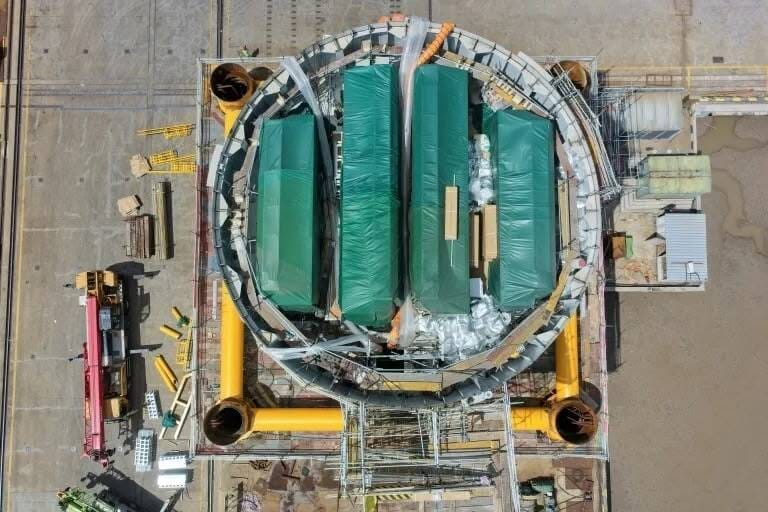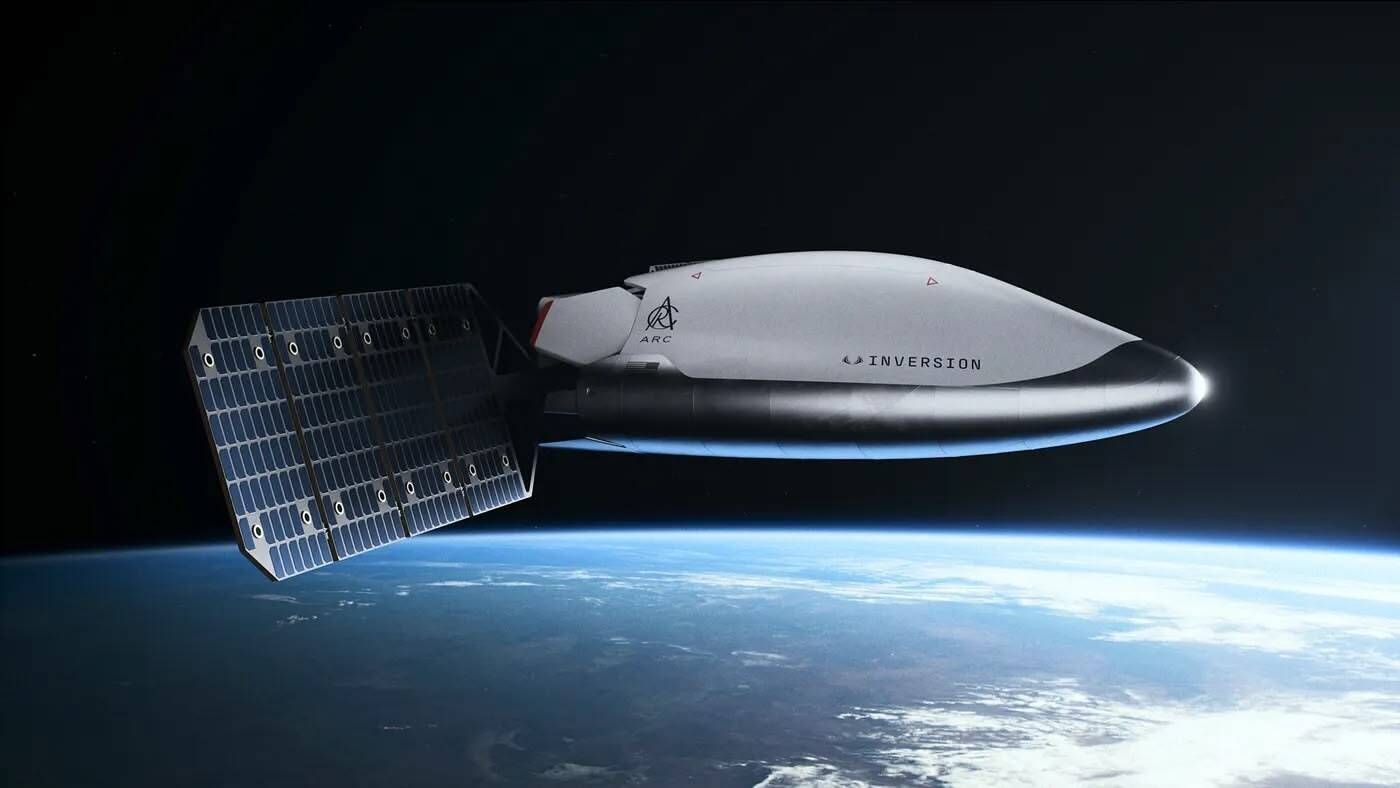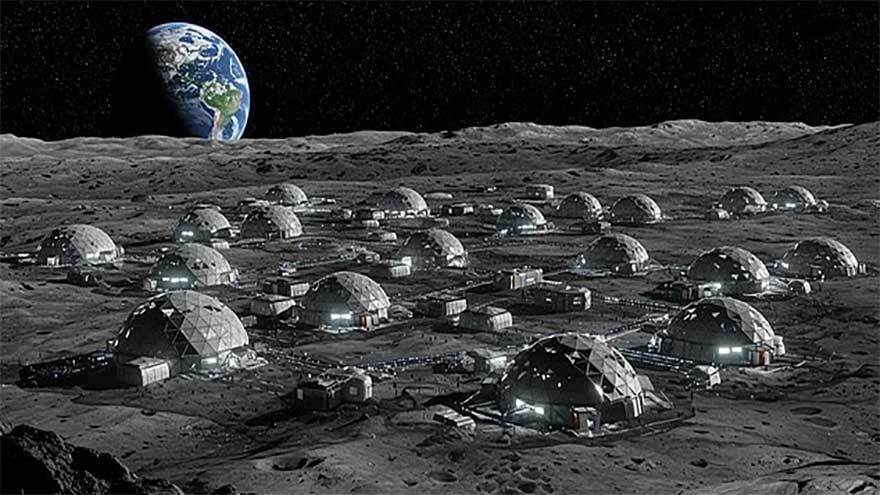October 06, 2025
Welcome back and Happy Monday. Google just deployed Gemini throughout its smart home ecosystem, transforming rigid voice commands into collaborative AI conversations that understand context and flow naturally through every interaction.
Could this mark the moment when AI assistants finally become genuinely helpful partners rather than frustrating tools?
In today's recap:
Gemini transforms Google cameras into intelligent security partners
Space delivery vehicles promise cargo anywhere in under one hour
Underwater data centers slash AI training energy consumption by 90%
NASA targets 2035 for first permanent lunar settlement
Oura merges luxury watchmaking ceramics with fitness tracking
Gemini transforms google smart homes
Recaply: Google just launched Gemini for Home, replacing Google Assistant across smart devices with advanced AI that understands natural conversations and provides contextual responses. The upgrade transforms how people interact with cameras, speakers, displays, and the Google Home app.
Key notes:
Gemini enables flowing conversations where context carries through, eliminating repetitive commands.
Smart cameras now provide AI-generated descriptions like "USPS driver placing package on porch" instead of generic motion alerts.
Home Brief feature summarizes hours of camera footage into digestible daily recaps.
Ask Home allows users to search video history, control devices, and create automations using plain language.
Gemini Live offers hands-free brainstorming sessions, from meal planning with available ingredients to party planning.
Impact: Google shifts from transactional voice commands to collaborative conversations, making smart homes truly intelligent. The upgrade addresses years of user frustration with rigid assistant interactions and spam-like camera notifications.
TOGETHER WITH RIPPLING
Don’t get SaaD. Get Rippling.
Remember when software made business simpler?
Today, the average company runs 100+ apps—each with its own logins, data, and headaches. HR can’t find employee info. IT fights security blind spots. Finance reconciles numbers instead of planning growth.
Our State of Software Sprawl report reveals the true cost of “Software as a Disservice” (SaaD)—and how much time, money, and sanity it’s draining from your teams.
The future of work is unified. Don’t get SaaD. Get Rippling.
OURA
Oura unveils ceramic smart ring line
Recaply: Oura just introduced its Ring 4 Ceramic collection, proving that health trackers can look as good as they work. The company partnered with a Japanese vendor known for creating beautiful ceramic colors to develop four unique shades that look even better in person than in photos. Alongside the new rings, Oura rolls out a portable charging solution and an affordable way to combine wearable data with professional blood testing.
Key notes:
The Ring 4 Ceramic uses the same high-performance ceramic material found in luxury watchmaking and fine jewelry.
Oura developed special wall thicknesses and engineering to ensure the ceramic rings can handle everyday wear without cracking.
Members pay $5.99 monthly or $69.99 yearly for access to sleep, readiness, and activity tracking plus the new Oura Advisor AI.
The Health Panels feature costs $99 per test and helps users understand their cholesterol, A1C levels, and 48 other biomarkers through simple app questions.
Users can now own multiple Ring 4 colors and swap them throughout the day to match workouts, outfits, or special occasions.
Impact: Oura positions itself at the intersection of fashion and health technology by treating its rings as wearable art rather than disposable gadgets. This approach opens doors for smart rings to reach people who value both wellness insights and personal expression in equal measure.
CHINA
The world’s first AI-powered underwater data centre
Recaply: China just made waves in the tech world by launching the world's first commercial underwater data center off Hainan Province. This innovative facility sits 35 meters below the ocean surface, using natural seawater to keep servers cool instead of energy-hungry air conditioning systems.
Key notes:
The underwater facility houses over 400 servers in an 18-meter cylindrical module that processes computing tasks faster than 60,000 traditional computers.
Seawater cooling slashes energy consumption by 90 percent compared to land-based data centers, making it far more sustainable.
The center operates with 95 percent renewable energy from offshore wind farms and achieves a power usage effectiveness of 1.1.
Major clients include China Telecom and state-owned AI companies using the facility for AI training, simulations, and research.
Built by Highlander, the project expands on Microsoft's earlier underwater experiments but takes the concept fully commercial.
Impact: This underwater approach could reshape how tech companies tackle the massive energy demands of AI and cloud computing. As data centers multiply worldwide, China's ocean-cooled solution offers a glimpse into greener infrastructure that works with nature rather than against it.
PRESENTED BY KEEPCART
With KeepCart or Without It — See the Margin Difference
Every checkout leak costs you. KeepCart shows exactly how coupon extensions quietly shrink your revenue — and how blocking them can recover hundreds per order. Your profit margin deserves a before-and-after moment.
Top brands like Bucketlisters and Quince have already seen the difference.
INVERSION
Space delivery in under an hour
Recaply: Inversion Space just introduced Arc, calling it the world's first space-based delivery vehicle. This innovative spacecraft promises to deliver cargo to any location on Earth in less than 60 minutes. The company positions Arc as a game changer for logistics, bringing unprecedented speed and global reach through space technology.
Key notes:
Arc measures 4 feet wide and 8 feet tall, carrying up to 500 pounds of cargo while orbiting Earth for up to five years
The autonomous vehicle launches into low-Earth orbit, then descends on demand using AI-powered controls and parachutes to land within 50 feet of targets
Inversion designed Arc for three purposes: rapid cargo delivery, hypersonic flight testing at speeds above Mach 20, and orbital operations
The spacecraft builds on Ray, Inversion's first mission launched in January 2025, which validated key technical systems
First Arc flight launches in 2026, backed by a $71 million U.S. Space Force contract and support from Lockheed Martin Ventures
Impact: Arc represents a bold vision where space becomes a transportation layer for Earth. While current applications focus on defense and testing, Inversion sees potential for broader commercial logistics. The company envisions thousands of Arc vehicles creating an on-demand network that could transform how goods move globally, similar to how railroads and aviation reshaped previous eras.
NASA
NASA plans moon village by 2035
Recaply: NASA just dropped some exciting news about life beyond Earth. Acting Administrator Sean Duffy announced at the International Aeronautical Congress in Sydney that the space agency plans to build an entire village on the Moon by 2035. This is not just another research outpost. NASA envisions a permanent settlement where astronauts can live and work continuously, powered by nuclear energy.
Key notes:
NASA aims to establish sustained human life on the Moon within the next decade, creating a full village rather than a temporary outpost.
The lunar settlement will use nuclear power to keep operations running during the Moon's two-week periods without sunlight.
The Artemis II mission will launch by April 2026, sending four astronauts on a 10-day trip around the Moon as preparation for the permanent base.
Construction will use materials found on the lunar surface, making the settlement more sustainable and cost-effective.
The Moon village serves as a testing ground for eventual human missions to Mars, helping NASA learn how to sustain life in space.
Impact: This announcement marks a turning point in space exploration. Building a permanent Moon village transforms humanity from occasional space visitors into actual space residents. The project pushes boundaries not just in technology, but in how people think about living beyond Earth. Success on the Moon could unlock the door to Mars and reshape what comes next for civilization.
NEWS
📰 What matters in tech right now?
Tesla activated its first 500kW V4 Supercharger in Redwood City, California, delivering charging speeds up to 500kW for cars and supporting 1.2MW for the Semi with 30% faster Cybertruck charging.
AMD accidentally leaked Fluid Motion Frames 3 in its latest Radeon driver package, revealing driver-level frame generation technology that improves game smoothness with lower latency ahead of its 2025 launch.
AMD unveiled its "Sea of Wires" interconnect design for Zen 6 processors, delivering up to 256 GB/s bandwidth per chiplet with 90% reduction in energy consumption for data transfers.
SpaceX announced it's targeting October 13 for Starship's 11th test flight from its Texas Starbase facility, marking the final mission of Version 2 before transitioning to the larger Version 3 model.
NASA administrator Sean Duffy announced plans to establish a sustained lunar village within a decade, featuring nuclear-powered infrastructure supporting long-term human habitation beyond simple outposts.
Google launched AI-powered ransomware detection for Drive desktop apps, automatically pausing file syncing when threats are detected and enabling users to restore multiple files with a few clicks.
China launched the world's largest hypergravity centrifuge facility in Hangzhou, generating up to 300 times Earth's gravity and accommodating loads of 20 tonnes for materials and geological research.
Amazon unveiled its first color Kindle Scribe e-reader, expanding its product lineup with enhanced color display technology for reading and note-taking experiences.
Databricks launched Data Intelligence for Cybersecurity, a unified AI-powered platform integrating with existing security stacks to enable real-time threat detection and automated response workflows.
Tesla launched its refreshed Model Y Performance in the United States starting at $57,490, featuring 3.3-second 0-60 mph acceleration, 306 miles of range, and eligibility for federal tax credits.
Blink unveiled its 2K camera lineup including the Outdoor 2K+ at $89.99, Mini 2K+ at $49.99, and Arc dual-camera system at $99.99 with 180-degree panoramic coverage.
Samsung announced plans to launch its Project Moohan XR headset on October 22 in South Korea, entering the extended reality market with its Android XR-powered mixed reality device.
EVENTS
Tech Week 2025: Oct 06 – Oct 12, 2025 · San Francisco, California, USA
Oracle AI World 2025: Oct 13 – Oct 16, 2025 · Las Vegas, Nevada, USA
OCP Global Summit 2025: Oct 13 – Oct 16, 2025 · San Jose, California, USA
GITEX GLOBAL 2025: Oct 13 – Oct 17, 2025 · Dubai, UAE
Seattle AI Week 2025: Oct 27 – Oct 31, 2025 · Seattle, USA
CES Unveiled Europe 2025: Oct 28, 2025 · Amsterdam, Netherlands
🧡 Enjoyed this issue?
🤝 Recommend our newsletter or leave a feedback.
How'd you like today's newsletter?
Cheers, Jason











